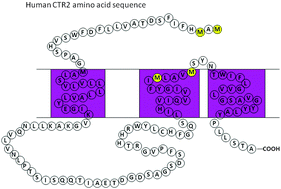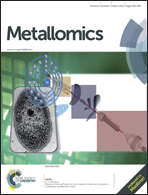Copper transporter 2 regulates intracellular copper and sensitivity to cisplatin
Abstract
Mammalian cells express two copper (Cu) influx transporters, CTR1 and CTR2. CTR1 serves as an influx transporter for both Cu and cisplatin (cDDP). In mouse embryo fibroblasts, reduction of CTR1 expression renders cells resistant to cDDP whereas reduction of CTR2 makes them hypersensitive both in vitro and in vivo. To investigate the role of CTR2 on intracellular Cu and cDDP sensitivity its expression was molecularly altered in the human epithelial 2008 cancer cell model. Intracellular exchangeable Cu+ was measured with the fluorescent probe Coppersensor-3 (CS3). The ability of CS3 to report on changes in intracellular Cu+ was validated by showing that Cu chelators reduced its signal, and that changes in signal accompanied alterations in expression of the major Cu influx transporter CTR1 and the two Cu efflux transporters, ATP7A and ATP7B. Constitutive knock down of CTR2 mRNA by ∼50% reduced steady-state exchangeable Cu by 22–23% and increased the sensitivity of 2008 cells by a factor of 2.6–2.9 in two separate clones. Over-expression of CTR2 increased exchangeable Cu+ by 150% and rendered the 2008 cells 2.5-fold resistant to cDDP. The results provide evidence that CS3 can quantitatively assess changes in exchangeable Cu+, and that CTR2 regulates both the level of exchangeable Cu+ and sensitivity to cDDP in a model of human epithelial cancer. This study introduces CS3 and related sensors as novel tools for probing and assaying Cu-dependent sensitivity to anticancer therapeutics.


 Please wait while we load your content...
Please wait while we load your content...